The Falklands conflict of 1982 highlighted the necessity for air-to-air refuelling, particularly for the successful prosecution of an air war at long range.
This article aims to discuss the future of UK aerial refuelling needs.
This article was submitted to the UK Defence Journal by Kelvin Curnow. Kelvin’s particular area of interest is naval aircraft and aircraft carriers. He is a keen writer and over the past fifteen years he has had a number of articles published in different journals.
Historical Background
By October 1993 the last of the Victor K2s which had proved so essential in the conflict had been retired. Their replacements included an eclectic array of aircraft some of which had only a short service life. Among the latter included six Hercules C-130Ks converted to single point tankers by Marshalls of Cambridge and six Vulcans converted to K2 configuration.
The principal replacements for the Victors, which began their service lives in the late 1980s and early 1990s, were no fewer than twenty-seven Bae/Vickers VC-10 C1K/K2/K3/K4 tankers. The VC-10s were supplemented by six ex-British Airways Lockheed L1011 TriStars purchased in 1982. Outside of the USA the VC-10/Tristar squadrons formed the largest tanker fleet in the world.
By March 2014 all these aircraft had been withdrawn from use, replaced by fourteen Airbus A330 MRTT (Multi-Role Tanker Transport) aircraft under the Future Strategic Tanker Aircraft (FSTA) programme. The programme was a Private Finance Initiative (PFI) deal awarded to the AirTanker consortium owned by Cobham plc, EADS, Rolls-Royce plc, Thales UK and VT Group plc. Based on the Airbus A330-200 airliner the Voyager is a modern design with inherent low operating costs, a vast pool of available spares and an enviable availability rate of 90%+.
It is capable of carrying a maximum payload of 245,000 lb (111,000 kg) of fuel, an additional 99,000 lb (45,000 kg) in non-fuel payload and 291 passengers. The growing number A330 MRTT operators, including Australia, the United Arab Emirates, Saudi Arabia, Singapore, South Korea, France Spain and the Multinational Multi-Role Tanker Transport Fleet (MMRTTF) ensures that the RAF will have a supportable aircraft over the lifetime of the AirTanker contract.
The AirTanker Contract
The AirTanker contract has proven deeply controversial. Worth £10.5 billion, the contract runs until 2035, and is worth £390 million per annum. Of this amount running costs are £80 million while the remaining £310 million covers the consortium’s financing and profit together with the capital cost of the project which includes aircraft and infrastructure. The exclusivity clause in the contract specifies that AirTanker will be the sole supplier of air-to-air refuelling services to the UK armed forces. In March 2010 the National Audit Office (NAO) declared that the PFI was not value for money.
In May 2012 an investigative piece by the BBC Newsnight programme revealed that according to AirTanker the cost of each Voyager is £152m. Newsnight reported that the Aviation Valuation Company deduced that the purchase of a fleet of fourteen aircraft would mean the list price per aircraft should be closer to £50m. As a comparison the purchase price of two additional KC-30As (Australian designation for the A330 MRTT) for the Royal Australian Air Force (RAAF) is £226m at 2012 prices. In a further comparison, the Armée de l’Air’s (AdI’A’s) fifteen aircraft A330 MRTT (French designation Phénix [Phoenix]) programme will cost £2.6B, approximating to £142M per example. In both instances the Australian and French air forces have purchased their aircraft outright, there are no ongoing costs of the kind associated with the AirTanker contract.
Current RAF Aerial Refuelling Capability
Of the fourteen Voyagers accessible only nine make up the ‘core fleet’, the remaining aircraft are the ‘surge fleet’. When not required by the RAF, these ‘surge’ aircraft can be leased to airlines (minus their military equipment), or to allied nations with the agreement of the Ministry of Defence (MoD). Of the five ‘surge’ aircraft only one was leased out for a period of three years via a June 2014 agreement with Thomas Cook Airlines. Of the ‘core fleet’ one is a civilian registered aircraft operated by AirTanker which is available to the MoD as a passenger and cargo transport on a charter basis flying the Falklands/UK air bridge. The eight in service refuelling aircraft consist of two Voyager KC2 and six Voyager KC3 variants.
The former are fitted with two Cobham 905E under-wing refuelling pods, the latter add a Cobham 805E Fuselage Refuelling Unit (FRU) in addition to the pods. Eight aircraft is a woefully small number for the RAF’s refuelling commitments. At any one time single aircraft are: based in the Falklands supporting Quick Reaction Alert (QRA); providing QRA tanking to UK based fighters; and, supporting Operation Shader against Islamic State (ISIS). This leaves spare capacity of just five Voyagers to meet all other refuelling needs. The fact is that there are inadequate numbers of tanker aircraft available to the RAF on a day-to-day basis is palpable, particularly given the heightened tensions between NATO and Russia, the ongoing conflicts in the Middle East, and escalating Chinese hegemony in the South China Sea. The lack of numbers is further exacerbated because the Voyagers are also employed on transport tasks including one which has been modified to VIP configuration.
Future Aerial Refuelling Needs
Leaving aside the cost of the AirTanker contract, there are three major issues facing the RAF. First, the Voyager is the only version of the A330 MRTT to not be equipped with the Airbus Aerial Refuelling Boom System (ARBS). Second, the Voyager is not capable of refuelling the growing number of helicopters in both RAF and Royal Navy (RN) service which can be probe equipped. Third, the exclusivity clause prevents the RAF using its own aircraft such as the Lockheed C-130J Hercules which can be equipped to provide air-to-air refuelling.
The first issue is easily resolvable with relative ease and little cost. The then Deputy Commander of Operations, Air Marshal Greg Bagwell, said at the FIDAE Airshow in Santiago Chile in March 2016 that the operational case for equipping at least some of the UK’s Voyagers with the ARBS had already been accepted. The ARBS would allow tanking of the growing number of aircraft in the RAF equipped with the Universal Aerial Refuelling Receptacle Slipway Installation (UARRSI). These are the Boeing C-17A Globemaster III, Boeing RC-135 Rivet Joint, and the forthcoming Boeing P-8A Poseidon and Boeing E-7A Wedgetail. The mooted purchase of the Lockheed Martin F-35A for the RAF would see the need for boom equipped tankers increase exponentially. An excellent example of the flexibility offered by a drogue and boom equipped tanker comes by way of the RAAF.
In operations against ISIS over Syria and Iraq a single KC-30A proved capable of tanking a wide variety coalition of assets. These included F/A-18F Super Hornets, other KC-30As (Australian MRTTs are equipped with the UARRSI), E-7A Wedgetails, C-17 Globemaster IIIs, AV-8B Harriers, Eurofighter Typhoons and Dassault Rafales. The flexibility of the KC-30A was demonstrated when in November 2015 a Boeing E-7A Wedgetail Airborne Early Warning and Control (AEW&C) aircraft performed its longest mission over Iraq lasting 17 hours and 6 minutes requiring two aerial refuellings. Arguably this mission could not have been accomplished with a Voyager and E-3D Sentry combination given the inordinate amount of time required to pass fuel using the FRU (2,650 l/min as opposed to 4,542 l/min for the ARBS). Additionally, the greater fuel load and higher fuel burn of the Sentry would have inevitably required more air-to-air fuel transfers.
Above all else aerial refuelling aircraft are force multipliers and enablers. Voyagers supporting the UK QRA permit the Typhoons to stay in the air for longer periods of time. This circumvents the need to scramble additional aircraft. For Tornados and Typhoons striking ISIS targets, aerial refuelling from Voyagers has allowed the fighters to stay on mission for anything up to 8+ hours. This has the consequence of providing unbroken over watch of embattled allied ground forces.
Another excellent example of how the A330 MRTT is both a force multiplier and enabler comes by way of the AdI’A’s Phénix aircraft. Prior to the introduction into service of the Phénix, the deployment of four fighters to Afghanistan would have required the support from one Boeing C-135FR to refuel the fighters, and two Hercules to transport 50 personnel and 12 tonnes of freight. This operation now requires only one Phénix. In another instance where the aircraft is both force multiplier and enabler, the RAAF intend to employ their KC-30As to refuel their Boeing P-8A Poseidon maritime patrol aircraft giving them the ability to range further out to sea and/or stay on station longer.
Given that the E-7A and P-8A are basically the same aircraft, 17 hour maritime patrol missions are quite possible. With the small number of P-8As and E-7As being procured for the RAF, the ability to fly longer missions would permit a more effective and efficient use of the two fleets.






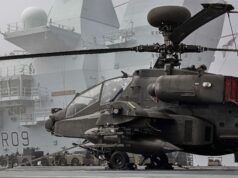
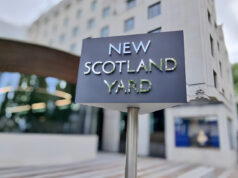
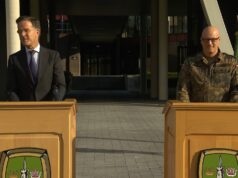

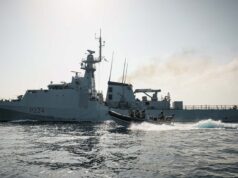
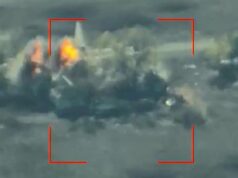

Excellent article, thank you.
As always, numbers.
Wasn’t this programme a Gordon Brown job? Not wanting to pay up front so pays out more long term over instalments?
I have never been happy that the RAF do not own their AAR assets.
Can the clause in this contract be changed? If not. Who are the clowns that signed it?
Aircraft was chosen in 2004, leasing agreement was signed in 2008. In other words, it’s the clowns who managed and agreed to all the other ridiculously one sided contracts and development programmes in the 2000s.
Hi Daniele,
With you on this one. Our age old bind. We seem incapable of buying a ship or a ‘plane or probably a rowing boat that is not fitted for but actually hasn’t got or why spend 100 % and get everything when you can spend 98% and leave something off. Rowing boats need rollocks. This seems more like a load of b…….!
Geoffrey. Nice to see you post.
Just say it. Get it out the system. I was told yesterday a rant can be good for you!
If the financial case has been made to equip at least some Voyagers (and if some, why not all) with ARBS booms given the value-add to existing and imminent future aircraft that will require it, can it be achieved in short order under the existing FSTA agreement, or is there an extended timeframe? What might be holding this up?
Can the KC3 carry passagers and cargo as well? As if its only the kC2 it means we only have one transport taking in to account the one designated for vip transport.
Yes it can, the A330 MRTT uses fuel from its own fuel-tanks for the air to air refueling tasking. There are no extra tanks fitted in the cargo or passenger holds meaning passengers and cargo can be carried even on an air to air refueling tasking.
Rather shows how much potential range a modern twin engine wide body has when it can sacrifice its own fuel for tanking!
That’s ridiculous. Impressive for the aircraft, but think of the potential. I knew the kc2 used its own tanks but I thought the kc3 had a large one in the cabin.
No, there isn’t any need for internal tanks in the passenger cabin or cargo hold. It isn’t ridiculous as well, the A330 MRTT has a MASSIVE internal fuel payload and a 9000+ mile range.
For normal tanker taskings the internal tanks have more then enough fuel to give away and still stay many hours on station.
Adding extra fuel tanks in the cargo hold or passenger cabin isn’t necessary. It is a major selling point over the Boeing 767 derived alternative that does need extra fuel tanks installed to perform its taskings. Arguably a number of international sales have been clinched for this very reason as any operator gets a full passenger and cargo capability alongside the ability to tank other aircraft.
This has been particularly useful for the RAF when it comes to international deployments of fighters as the A330 MRTT can not only tank the jets on transit but also carry their support crew and equipment.
Fair enough
There is a massive trade off though. Ferry range is 9,200 miles, but combat radius is 1,116 miles.
Makes you wonder what capability it would have if it had additional tanks, but then passenger and cargo capability would be compromised, not that freight, passengers and AAR would be on the same mission. Value for money though.
Certainly on a normal tanker trail over the North Sea Voyager isn’t going to be lugging passengers or cargo about but they have used the capability when ferrying Tornado, Typhoon or Lightning. Certainly a nice feature to have.
The amount of fuel that a Voyager can give away on a tanker trail or ferry is a quantum leap over anything we have had before. The only thing that beats it for fuel offload is the KC-10A Extender (and maybe the Iranian KC-747) and that is far more costly to operate.
A very intresting article, I have always felt that the number of AAR equipped A330-200 are inadequate for the RAF’s requirements. All of the fourteen should be in service as tanker transports and all should be fitted with the boom for refueling US built aircraft.
Another point is how long will it take to add AAR capabilities to those aircraft currently in the surge fleet? In my view if we had to fight another Falklands type war how long would it take to modify the surge fleet? A week, a month, six months or longer for each aircraft, the war could be fought and won or lost before they became available.
Good interesting article about a subject that doesn’t often get much of an airing.
And we still have a few older RAF tankers lying around, I think we are giving them to nato if I remember correctly! Dam shocking state of affairs. I hate what re ent governments have done to our once world class millitary assets and world class numbers of millitary assets! We still have the second largest number of chinooks on earth… unfortunately the japs are buying more F35s so won’t be second there anymore. Not sure where else’s we come behind USA on? IStar?
Of those in flyable condition there is a small number of ex RAF L-1011 Tristar sitting at Bruntingthorpe but they are being made ready to fly out to the US as they have been purchased by an American Defence Contractor offering tanking services.
The remaining VC-10 have been scrapped and there is a single Victor in a taxiable condition….that is it.
Why is it unfortunate for Japan to be buying more F-35? They are a democracy and a sovereign nation with its own defence needs.
Because it’s nice when the UK has second most of something after USA.
Well I have been critical of this PFI since day one. Sadly New Labour could not tell the difference between a military tanker & a budget carrier airliner. A budget carrier cannot afford to lug about heavy military kit. So the taxpayer forked out to convert them to AAR, only to pay another fortune to de equip them for airliner charter work. If we needed them back in the RAF, we would have to pay the re equipment costs again.
I think PFI contracts should be subject to the Unfair Contracts Act. That was brought in by the Labour government of the 1970s to deal with slum landlords. PFI bosses fit into the same category in my book. The change would need votes in Parliament.
Once that is done, we would have some leverage over Airtanker to say, sell off 4 unused A330. The RAF then buys 2x second hand A330 & fits them just with the ARBS boom system (plus a cargo door). We also buy 2x KC-130J to refuel helicopters & turboprops.
So Airtanker keeps its position fuelling fast jets using hoses, but the RAF is free to fuel boom needing aircraft + the slow movers (helicopters) that the existing Airtanker Voyagers cannot fuel.
Has the surge fleet actually been used to assist core, excluding the single leased example? The article is not clear unless I’m missing a detail.
Does the RAF even have the crews for it?
Or is it sitting at Brize un used?
Yeah, I find this article slightly puzzling. By all accounts there has been a surplus of tanking availability from the Core fleet and not a shortage as this article infers.
That is one of the reasons why one was converted into a VIP configuration for Government and Royal use.
Also the article misses a key point, the PFi contract with the MOD sets out that the consortium must provide a certain amount of ‘Availability’ every year. It is not the MOD’s problem how that ‘availability’ is delivered, if there is not enough availability from the core fleet then the surge fleet has to be converted and put on tasking. If that isn’t enough to maintain ‘availability’ it is up to the Consortium to find ways to improve even if they have to add extra airframes.
Hi, we accept submissions so if you fancy putting something together that better discusses this topic then please feel free.
I want to see part 2 of this article before passing any serious judgement.
Humphrey has a pretty good article about the PFi side of things, I would only be covering the same ground. Put simply the RAF is buying a service not an aircraft and if there isn’t airframes available for taskings that is the consortiums problem to solve.
https://thinpinstripedline.blogspot.com/2018/07/what-lot-of-hot-air-mail-on-sunday.html?view=classic
I would add an additional requirement: V-22 – for obvious reasons…
I wish all of you a good Memorial Day and please remember those who have made the ultimate sacrifice for our countries.
Cheers
I suppose, if we did go for MRTTs with booms, then we would have to train aircrews as boom operators. Another aircrew category and another expense, which the MoD can say they cannot aford…
Its an added skill for existing aircrew and refuelling operators.
Thanks TT – that did occur to me after I’d sent my post…
Can the A330 MRTT operate simultaneously with ARBS and FRU systems. Or each aircraft can have one of both probe systems?
New to this forum, but I’d also like to know if an A330 MRTT airframe can be fully fitted out with all three types of AAR simultaneously, i.e. underwing, probe & FRU? I presume if the R.A.F. have considered this, they either would have to “convert / upgrade” existing two-pointers only? Can anyone with more knowledge help please? Thank you.